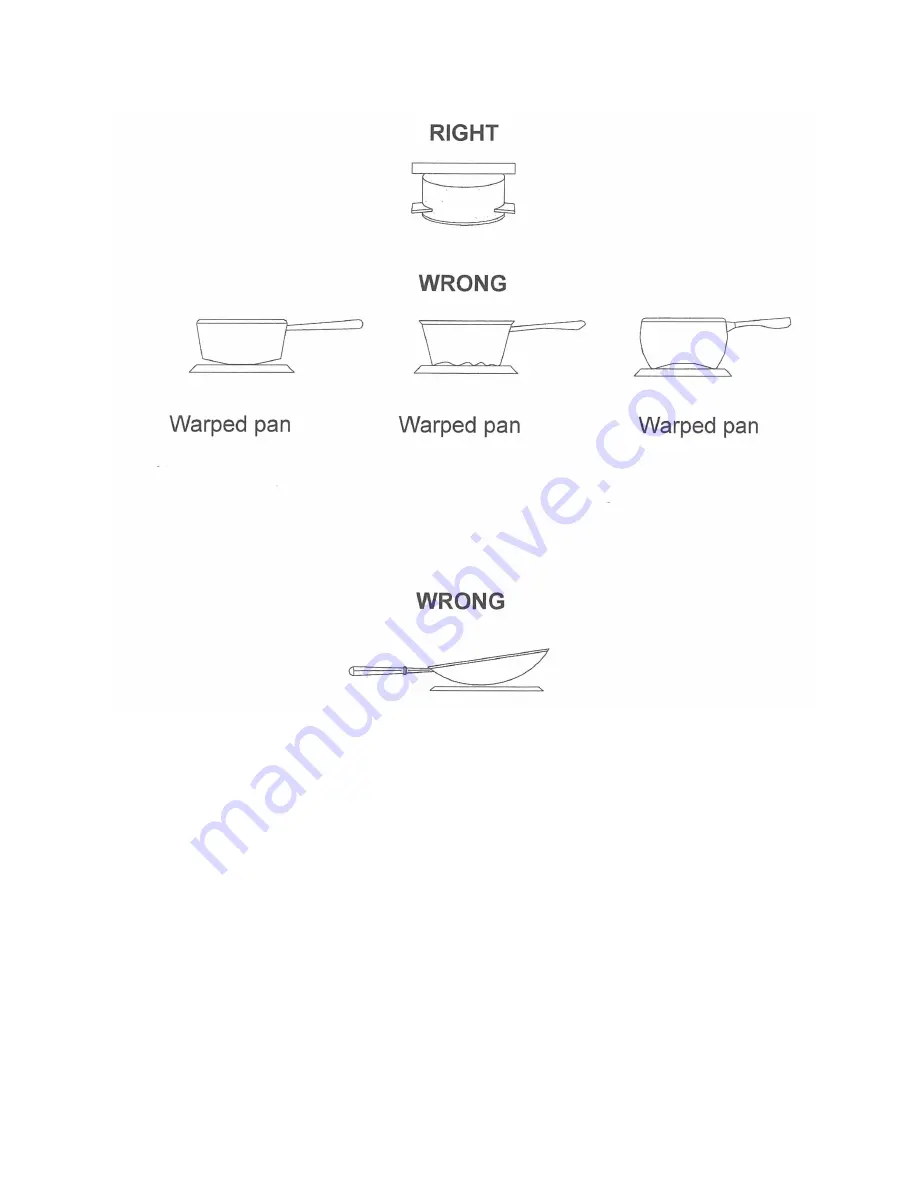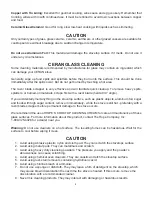
3
Thick Bottom:
Pans with thick bottoms are also effective in eliminating hot spots by providing good
heat distribution. In general, you should not use a vessel with a bottom less than 1/16".
THE MATERIAL OF THE VESSEL ALSO INFLUENCES COOKING
PERFORMANCE.
Stainless Steel:
Used for sauces, soups, vegetables and egg cookery. It responds relatively slowly to
temperature changes. The best stainless steel utensils have thick "sandwich" bottoms where a layer of
aluminum or copper lies between layers of stainless steel.
Enamelware:
Ideal for cooking large amounts of liquid. It is stain resistant. The thickness of the bottom
should be at least 3/32 of an inch thick.
Aluminum:
Best suited for frying, braising and pot-roasting. The pan bottom should not be too thin, at
least 3/32 to 3/16 of an inch.
If your cookware spins on the cooking surface, it means that a small bow has formed toward the
cooktop during heating. Do not use this cookware.
Corrected Diameter:
The diameter of the vessel should be the same as the diameter of the glowing
heat zone.
Good Balance:
Your pan should always be level on the cooking surface, with or without food in it. It will
make good contact with the heating area for uniform heat distribution.






























